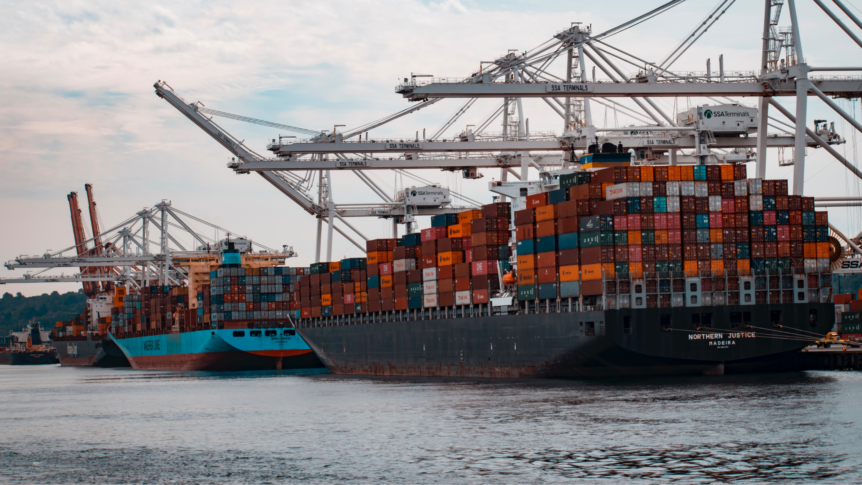Even as the global shipping year of 2020 has been full of twists and turns, it is apparent that China will continue to play a starring role in the global supply chain of finished goods and components. Air shipments from Asia have been controlled by limited capacity in 2020 because of all the flight and travel restrictions that have curtailed passenger air travel. Now that major tech companies have launched their newest toys – Apple’s iPhone with 5G capability, Microsoft’s Xbox Series X and new Surface Pro’s, and Samsung’s latest Galaxy lineup – demand for air space takes air rates back up to crazy levels, being considered ‘through-the-roof’ for a normally-hectic Q4.
Ocean shipping in the Asia to USA lane has seen capacity removed from the market, rate increases that have raised container rates to levels not seen in many years, port congestion due to dynamic vessel activity, continued transit time challenges, and transshipment port delays. Even the biggest shippers – Wal-Mart, Target, and huge pharmaceutical and tech product shippers – have accepted rate increases on their fixed-rate contracts simply to secure space on vessels. The steamship lines are limiting the low revenue rated cargo they will accept.
Even the tariff increases on billions of dollars of goods did little to encourage shippers to source product elsewhere. Southeast Asian countries – Vietnam, Cambodia, Laos – are not inherently ready to take on all new manufacturing/production processes.
Table of Contents
What can a shipper do in 2021?
1. Align with a Vetted NVOCC
If a shipper is used to dealing with steamship lines only, it would be to their advantage to align with a vetted NVOCC to add to their mix of service providers. When doing this, make sure to advise the NVOCC which carriers they plan to sign contracts directly with.
2. Allot Significant Volume to NVOCCs
Consider allotting a significant volume to NVOCCs in order to make sure cargo moves, even during peak times. It is possible to set up contractual arrangements with an NSA (NVOCC Service Agreement). It is also beneficial for all to establish relationships early in the shipping season.
3. Provide More Shipment History
The year 2020 was challenging and its shipment history – volume, weight, dimension, and mode – may be much different from ‘normal’ years. We encourage all to provide at least two years of shipment history when launching an RFQ. Be mindful of peak and slack shipping periods in order to negotiate rates that allow maximum available space during peak times and takes advantage of the rates during non-peak times.
4. Source Alternatively Outside of China
China certainly has the technology, the skilled workforce, and a sophisticated supply chain mechanism, to manufacture goods, but the price to do so has increased significantly. Many importers are seeking to source their products outside of China simply due to the high cost. The higher tariffs for many goods manufactured in China have also encouraged US companies to look elsewhere to produce their goods. However, this transition is not done quickly since most Southeast Asian countries are working to ramp up infrastructure improvements that take time.
China has also moved a lot of their production to Southeast Asia already. Many Chinese companies are improving many Southeast Asian transportation networks with port expansion and river transport upgrades. Cambodia is a perfect example of this. While it is not a quick switch, looking long-term into alternate sourcing outside of China is worth it.
5. Find Fast LCL Shipping Solutions
There are fast LCL shipping solutions available today in which LCL carriers can avoid breaking down containers at congested, expensive coastal terminals. Fast LCL can rival sea/air solution transit times. In the past when ocean rates were lower, it made sense to put 10 cubic meters into a single container. Now, with higher ocean rates, it becomes more cost effective to move larger amounts of cargo as LCL. Work with an NVOCC partner to find the best solutions that match the origin/destination pair.
We don’t know the landscape of 2021, and with the pandemic and political uncertainty, we are reluctant to make a guess right now. What we do know is that most Asia-USA ocean contracts will expire on April 30, 2021. From this, we can expect contract rate negotiations to resume in March and conclude at the end of April. This is a good time to seriously consider reaching out and have open discussions with service providers who want to understand your business.
Pegasus Logistics Group has a committed, experienced, knowledgeable, and creative group of Sales and Global Solutions team members who want to get to know you and can find ways to partner with you to fine-tune your supply chain. Your success is our success, and we use the term “partner” very deliberately when it comes to our clients. For more information, email info@pegasuslogistics.com or call 800-997-7226.


